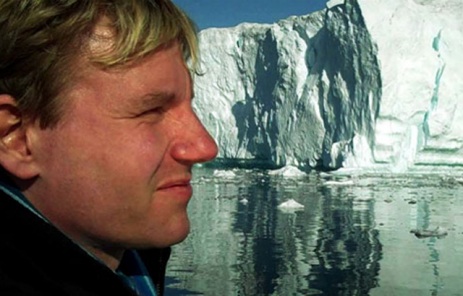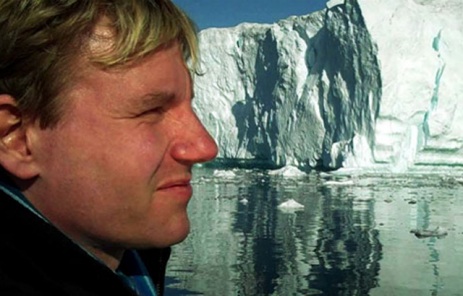
Bjorn Lomborg would have you believe that he’s an unbiased tipper of sacred cows who inspires rage in pretty much everyone who thinks about climate change precisely because of his resolute centrism — he’s neither in denial about global warming nor particularly worried about it, even if it is his life’s work.
In his new movie Cool It, Lomborg argues that the end-of-days climate scare tactics we’ve grown accustomed to are great for getting attention, but not for motivating the kind of action that he favors, which is adaptation. Geoengineering, sea walls, economic development: that’s about the whole of the ‘radical’ new course that Lomborg charts.
Before we check in with the talking heads, here’s an important thing to know about Lomborg: sometimes he lies. He’s been lying since he wrote The Skeptical Environmentalist, a book so lousy with whoppers that it was debunked by an entire other book, a scathing review in the world’s leading scientific journal, a whole series of articles in Grist, and even special issue of Scientific American that included a piece by Obama’s current science advisor, John Holdren.
New York Times‘ movie critic: Snowed!
The Times sent second-string movie reviewer Jeannette Catsoulis to see Cool It, and her review mostly reinforces the notion that dead-tree publications that allow neither fact-checking nor enlightened commenting should collapse under a mountain of crushing, un-refinanceable debt:
I was intrigued to hear Mr. Lomborg say, for instance, that the polar-bear population is more endangered by hunters than melting ice.
Which is of course a lie. Joseph Romm debunked it on Grist in 2007, and countless others have since.
Boston Globe: Reasonable critique of what’s ultimately a thoughtfuZZZZzzzzzzz…
Timoner [the film’s director] definitely means “Cool It” to be constructive. To that end, she’s turned the last block of her movie into an infomercial showcasing the work scientists are doing with alternative energy and how much it will all cost.
The Guardian plotzes out a cheeky translation of the core message of the first half of the film:
By the way, did we tell you that environmentalists are freaking the living bejesus out of our children? In fact, they’re no better than those evil Commies we fought in the Cold War. They probably are Commies, to be honest.
The takeaway
When Cool It isn’t throwing jabs at environmentalists and trying too hard to make Lomborg look like the kind of sweetheart whose views couldn’t possibly be unreasonable (at one point, apropos of nothing, the film drops into a scene of Lomborg visiting his mother), the film’s core message is so utterly uncontroversial that only a figure as polarizing as Lomborg could make it sound the least bit contentious.
Lomborg argues that the world needs to spend $250 billion a year on development of clean energy technologies. Because climate change is happening and mitigation — preventing carbon from entering the atmosphere in the first place — is an absolute necessity.
Outside of his core thesis, the main reason Lomborg is sanguine about climate change is that he’s between five and 20 years behind the cutting edge of climate science. He likes to claim, for example, that sea level is likely to rise only 20 inches over the next century, when scientists now believe that the actual figure will be between three and six feet, and that more importantly, sea level will continue to rise, possibly quite rapidly, for centuries after.
Lomborg is also a fan of the kind of geoengineering that resembles artificial volcanoes, but he neglects to mention that it would turn the skies orange and do nothing to stop ocean acidification that will destroy the world’s fisheries and could eventually threaten the ability of the seas to sequester the carbon they’re currently hoovering up, leading to nightmare feedback scenarios. (He’s also a fan of a variety of geoengineering that would cool earth by brightening clouds over the ocean, but doesn’t mention that it could kill millions by arresting the Asian monsoon.)
For all the scenes in this film of Lomborg sympathizing with children in the developing world, he neglects the fact that billions of people will never have the resources to engage in the kinds of climate adaptation he proposes, thanks to the triple threat of population growth, resource exhaustion, and of course climate change. His purported concern seems disingenuous at best and downright malicious when you really think about it.
If Lomborg were merely a sort-of reformed fabulist who had forced the media on six continents to fact-check his sloppy work, he’d be harmless. But because of his reach, the danger of Cool It is that, rather than accomplishing his stated goal of motivating us to do something about climate change, it will simply confirm the business-as-usual bias of those most likely to watch the film.
Exhibit A: This Huffington Post review:
If Lomborg’s goal was to make people like me even more skeptical about what’s been going on over the last decade by those forces of fear who inspire our children to take crayon to paper, than [sic] he has succeeded.
To which Joseph Romm replies:
Yes, [random HuffPo writer,] Lomborg’s goal was to make more complacent those who aren’t paying close attention, those who have no interest in investigating the science for themselves, those who refuse to check simple facts online. I just don’t think it’s anything worth bragging about.
It’s not that Lomborg is evil or mendacious. What rankles most is that a mediagenic figure who now finally agrees that we need to do something about climate change is gleefully sniping at so many others who believe that we need to do something about climate change.
Lomborg’s targets even agree with his specific point that we need to spend a hell of a lot more money
on clean energy technology than we do. Aside from his ongoing de-emphasis of the generally worsening scenarios for the future of the environment in a warming, more crowded world — his denialism-lite — the only difference between Lomborg and his supposed opponents is framing. Lomborg, an economist, says European-style carbon caps have been a waste of money, and in the same breath proposes a carbon tax to fund his push for innovation.
Perhaps it’s a good thing that a darling of conservative thought leaders on climate change is now more or less on the side of everyone he’s spent a decade fighting. Whether or not he’s a Pollyanna, it makes one wonder: Is Lomborg’s inherent optimism what a mainstream, American movement on climate change looks like, or does his framing make his life’s work merely a sop to those who would have us continue on our current path until we drive our climate and energy system over a cliff?



